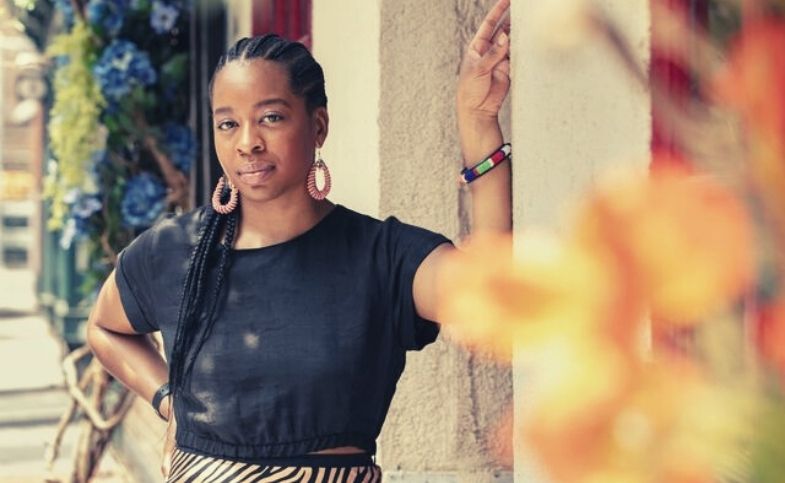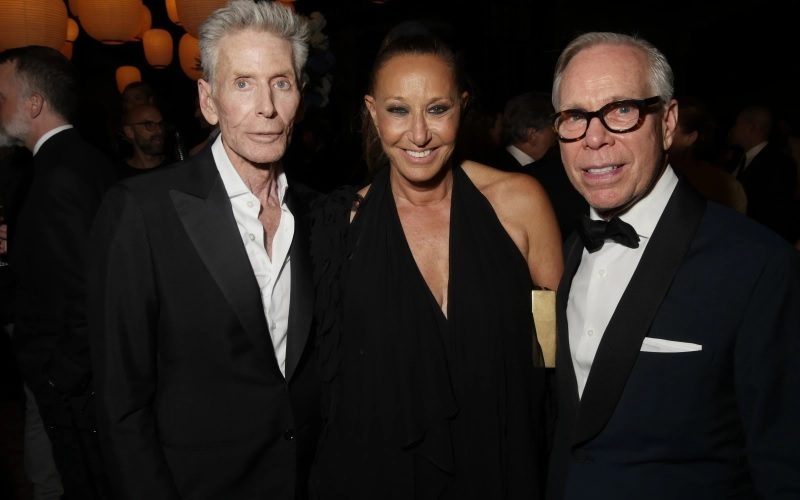Ralph Lauren, Donna Karan, and Calvin Klein used tobe the top designers on Seventh Avenue.
Can Rihanna or Kim Kardashian take their place?
Ralph, Donna, and Calvin all made fashion brands that were the best in the world. They had the brand recognition, reach, and personality to buld mega-businesses, set the trends that made American fashion popular, and move forward in many product categories around the world.
Not only did these brands and their founders set the trends, but they also met a need. They were the designers that other creators wanted to see in the companies that other brands wanted to be like.
As Ralph, Donna, and Calvin have grown and changed over the years, they have become a part of fashion’s foundation. It’s no longer the new brands that are popular; the next generation wants to overthrow or compete with the old ones.
After this top three, other designer names like Tommy Hilfiger, Michael Kors, and Tory Burch took over. All of them are set up the same way.
Butm where are the younger people?
Both the Kardashian with Skims and Rihanna with Fenty x Savage have made a big splash and had resounding success with still very focused products.

The question is whether or not they can get really big and stay big.
Martin Lindsrom, an expert on branding, said, “The days of a sprawling, multi-category brand gaining global popularity are numbered. Just like the ideas of truly global models, bands or artists count. Extreme media fragmentation and a music industry in which millennials barely know the artists behind auto-generated playlists streamed from Spotify—where loyalty is more to the platform or playlist aggregator than to actual artists—has spread to all corners. trade.”
Lindstom pointed to FashionUnited’s list of the world’s most valuable fashion brands, which was led by Nike, Louis Vuitton, and Hermès. However, only one brand under the age of 20 made the top 30; the German e-commerce company Zalando.
“Staying young is hard, being younger is even harder,” Lindstrom said. “The concept of global brands is in an existential crisis. It’s too difficult for a brand to create a truly global appeal by navigating the rough waters of aspiration, race, sexual preference, gender, age, media usage, nationality – and at the same time remain relevant.”
Lindstrom pointed out the Kim or Rihanna could make it, but that not many actors, reality TV stars, or other performers will.
“Most fail to translate their global on-stage appeal into a new category [commercial product] is much more difficult than going from microphone to camera,” he explained.
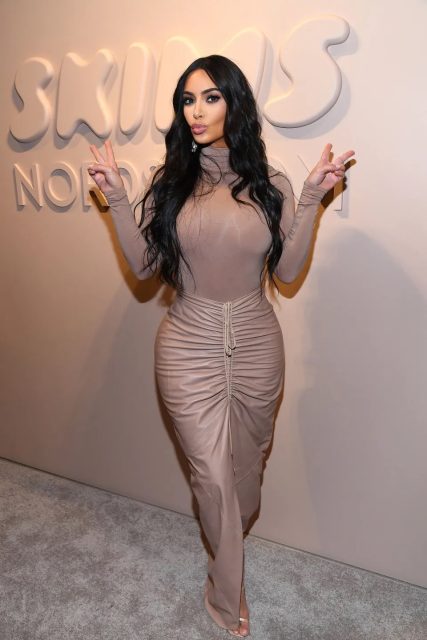
And even though Kim, Rihanna, and others have huge social media megaphones, they are shouting into a space that is getting more and more crowded and competetive, where people’s attention spans are especially short.
All signs point to the fact that Skims shapewear and Fenty underwear are growing at an amazing rate. But at the same time, they have to compete with a lot of other brands making names for themselves, like ThirdLove, Parade, and Sofia Vergara’s EBY, as well as a lot of big-name lines, like US market leader Victoria’s Secret, which is back on the move after previous trips.
The same thing happens in the worlds of beauty, ready-to-wear, swimwear, and other things.
“It’s easy to build a brand today, you could build it, I could build it, the barriers to entry are relatively low,” said Patrice Louvet, President and CEO of Ralph Lauren Corp. “You could sell your product online, you could access manufacturing relatively easily, you could advertise online relatively easily.”
In this case, Luve said that the market has too many different parts.
He said, “Many brands come and go. There are a lot of brands that can probably reach a few $100 million, but then when you have to turn around to $1 billion, you have to invest in a physical presence, you have to invest in digital capabilities. We’re talking big dollars.”
When there are a lot of brands, there is more competition for customer’s money and for their opinions.
Then, if you want to build a brand like Ralph, Donna, or Calvin, you have to not only get to the top, but also stay there. Think about the designers who would come after these three big names: Michael Kors said that his business didn’t “shine” when Lawrence Stroll and Silas Chow bought it and fixed it up in 2003.
Isaac Misrachi just sold his business to brand management company WHP Global for $68 million. Marc Jacobs has had a lot of ups and downs over the years, but he is not back on the pat to growth under LVMH parent company Mot Hennesy Louis Vuitton. Even Donna Karan had problems after the IPO and the purchase of LVMH. Eventually, LVMH was sold to G-III Apparel Group, which got rid of the High-End Collection line but rebuilt the business. In the 1980s, 1990s, and August, many other names came and went.
Louvet said that Ralph, Calvin, and Donna have a “unique point of view that stays the same over time.”
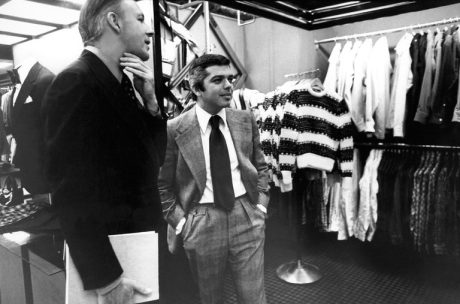
This is a rare trait, and it takes a while for it to really show.
Luve wondered, “Is Supreme’s positioning timeless, or are the values behind the brand generally compelling and timeless? Is there anything clear about what this brand is for?”
He didn’t give a clear answer, but it was clear that he wants another mega-brand.
Luve said, “We really hope it’s possible. We believe in entrepreneurship. We believe in innovation. We believe in constantly offering something interesting to the client, but this is more difficult.”
Customers need more than just an interesting product for you to bring them interesting things.
Louvet said, “I think Ralph is sometimes closer to a filmmaker than a traditional fashion designer. Everything starts with a story and then the product is incorporated into that story, almost like a prop in that story to bring the story to life.”

Gary Wassner, CEO of Factor Hilldun Corp., said, “At the time when Ralph, Calvin and Donna were building their businesses, and even when Michael [Kors] and Tori [Burch] built their business, there was no social media, they dominated the press.”
“Think about Brooke Shields and Calvin Klein. We don’t even have supermodels anymore,” he said (although the Hadid sisters certainly rank higher there). “Social media gives us so many options that we jump from one to the next. It’s hard to stay in the same place on social networks for a long time.” When you could control the press, it wasn’t hard. It was in one place. We had people who made sure these brands were in the spotlight. Those people are no longer in charge.
Wassner, who just started working for a private investment company, said, “I don’t think we’ll be building any megabrands any time soon. I think we’ll be building brands worth $250 million, $300 million, or maybe $500 million.” The BVG Fashion & Apparel vertical is being built by Brand Velocity Group.
In many ways, next-generation brands are very different from brands of the past.
Robert Burke, CEO of Robert Burke Associates, said, “We might not see another Ralph, Calvin, Donna, or Tommy in American fashion in the near future.” “The old retail/wholesale model has changed so much that these big guys can’t do business the way they used to.”
Burke mentioned the many New York designers who were popular from 2000 to 2010. They started with ready-to-wear, added a second line, made accessories, shoes, and perfumes.
He said, “It was too fast for them and the client.” “None of them are as good as the big players. At the same time, big brands love LVMX [Mot Hennessy Louis Vuitton].Kering and Prada have become much stronger in their relationships with suppliers, as well as in concessions with department stores and their own retailers.
The Aughts designers were all based in New York, but none of them ever managed to play the role of filmmaker Ralph. Everything has changed, including fashion and the media. The small screen in your pocket is now dwarfed by the big screen at the movies.
Kim and Rihanna are in charge there, but is that enough?
Michelle Clouse, a consumer partner at Kearney who started the luxury sportswear brand Urban Savage, said that the next Ralph or Donna would almost certainly have to become a celebrity influencer before they could even think about a multi-category approach.
She says that this is the opposite of the 1980s, when Ralph, Donna, and Calvin built their businesses and became culturally important because of it.
She said, “To build a business like that now, you need to have a cultural impact first and foremost.” “The crowd is king. Content is king. No longer is the product the only king.
Clouse said, “Kim doesn’t make the product, she is the product.”
It’s a very successful end product; earlier this year, Skims raised money and was valued at $3.2 billion.
But this success might just lead to a job in a different field.
“It may be a shorter legacy, but in a way it’s bigger and can reach a wider range of categories in a more genuine way because people are much more spontaneous,” said Clouse. “How well did you know the person Calvin Klein? You didn’t.
But Kelvin built a big business that its parent company, PVH Corp., grew even more, bringing in an extra $3.7 billion in sales last year.
Stefan Larsson is the CEO of PVH, which also owns Tommy Hilfiger. This spring, he told analysts about his bigger plans for the company in the same space in Manhattan where designer Calvin Klein held his runway shows. This was to show how important brands are, which is what PVH is based on.
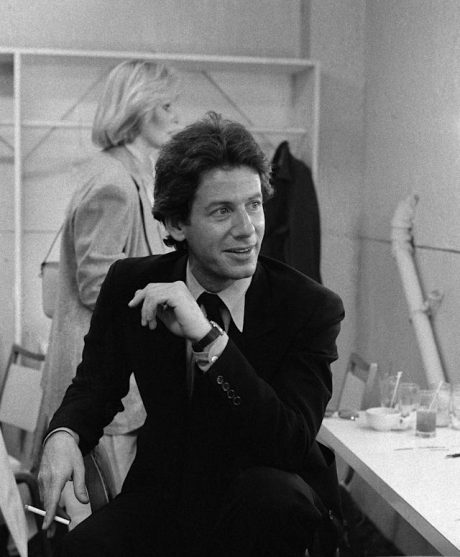
“I don’t think it’s ever been this hard to make the next Calvin Klein or Tommy Hilfiger,” said Larsson. “You will lose if you compete with something generic, like a generic product, a generic customer experience, or a generic brand. The people who will buy things in the future are already here. Generation Z already has the most money.
He also made it clear that when it comes to fashion, being first is a good way to stay first.
Larsson said, “We already have a global customer base, so we don’t need to get more.” “There are people in every market around the world who love our brands. We’re on the market in many ways, including digitally and by keeping relationships.
Kim and Rihanna have followers and clicks, but they still don’t have everything.








